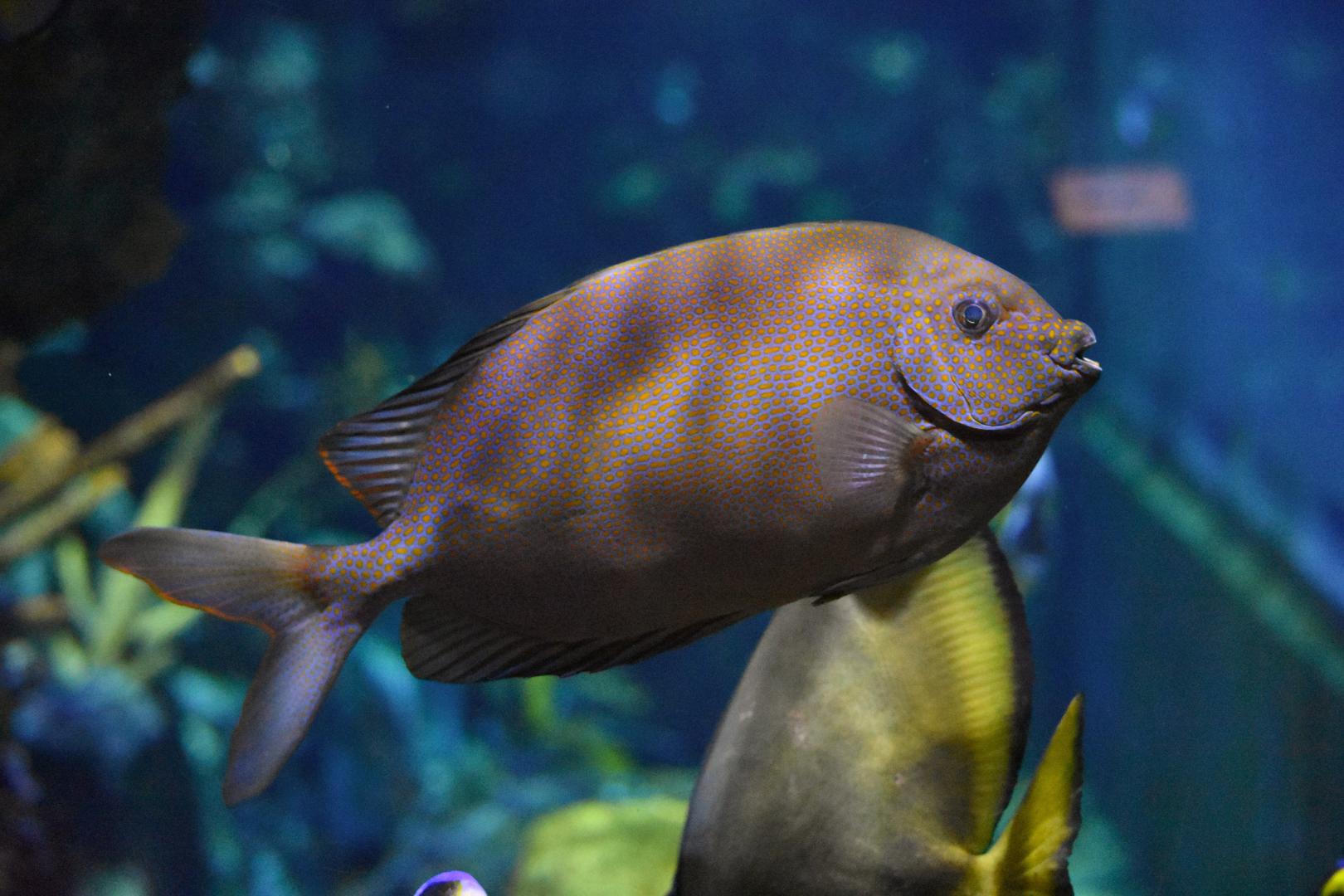I LIVE IN THE INDO-PACIFIC OCEAN
The goldspotted spinefoot is native to the western Pacific Ocean, bordering on the eastern Indian Ocean. These uniquely-patterned fish are typically found living in reefs and lagoons, bodies of water separated from larger bodies of water by natural structures like reefs.
I AM AN HERBIVORE
The goldspotted spinefoot has a vast herbivorous diet that includes algae growing on the sea floor, and seaweeds and grasses.
GOLDSPOTTED SPINEFOOTS ARE SOCIAL
The goldspotted spinefoot is a social fish species, and juveniles will often live in schools of up to 50 individuals. However, schooling tapers off as the fish grow in size and age, and many older goldspotted spinefoots will just live in pairs.
COOL CORAL CAMOUFLAGE
The goldspotted spinefoot is brown with small golden spots covering their entire body, even their eyes. This pattern that helps the goldspotted spinefoot hide from predators amongst the coral in their habitat.
HELPING THE GOLDSPOTTED SPINEFOOT IN THE WILD
By visiting the Fort Wayne Children’s Zoo, you are supporting local, regional, and global conservation. A portion of every ticket sold goes towards conservation of wildlife and wild places. Each year, the Fort Wayne Children’s Zoo donates over $250,000 to our conservation partners.
I AM IMPORTANT TO MY ECOSYSTEM
Because of their algae-centric diet, the goldspotted spinefoot plays an important role in keep algae growth under control, something that brings balance to the reef and ensures its health and survival.

